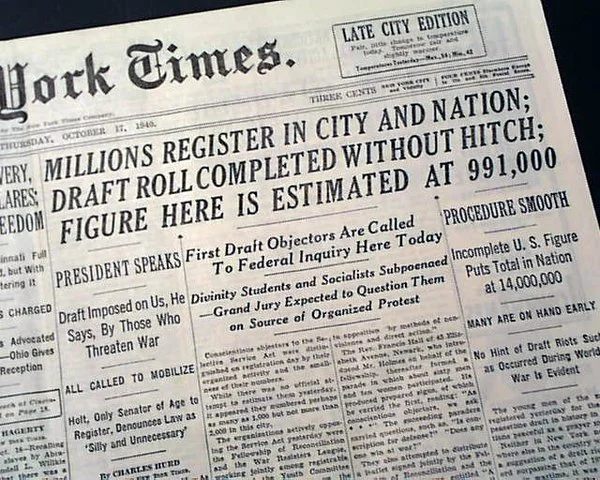FDR Prepared the Nation for War
Eighty years ago, The United States may not have been prepared for Japan's surprise attack on Pearl Harbor, December 7, 1941, but it was prepared for war.
President Franklin Delano Roosevelt (FDR)
In contrast, when the United States entered World War I in April 1917, the nation was not ready.
Background
After the horrors of World War I, nations wanted to prevent any future wars. Japan, the United States, Great Britain, France, and Italy, signed the first-ever disarmament treaty, the Washington naval treaty of 1922, which limited the size of navies. Countries kept their military budgets low while enjoying the economic growth of the Roaring Twenties.
Unfortunately, peace did not last. In 1931, Japan conquered Manchuria, part of China. Six years later, Japan launched a war against China. Meanwhile, fascism arose in Europe, starting with Mussolini in Italy in the 1920s, followed by Hitler in Germany in 1933. Both countries began to re-arm. Italy invaded Ethiopia in 1935.
The United States maintained its traditional isolationist foreign policy during this time as it grappled with the Great Depression during the 1930s.
Full-scale war broke out in September 1939 when Germany conquered Poland. This was followed by Germany's blitzkrieg (‘lightening war’)assault of Western Europe in May 1940. In six weeks, by mid-June, Holland, Belgium, and France had fallen. Britain stood alone.
Two Ocean Navy Expansion Act of 1940
FDR and Congress were concerned about the sudden fall of Western Europe. In the summer of 1940, it was easy to imagine that Great Britain would fall next. So Congress passed (with bipartisan support), and FDR signed, a bill expanding the Navy by 70% in this environment. Known as the 'Two Ocean Navy Expansion Act of 1940', it built upon several previous laws starting with the Navy expansion act of 1934.
World War II Aircraft Carrier
U.S. Admiral Stark testified that "this increase was needed in light of existing world conditions—it would allow the U.S. Navy to undertake offensive action against an enemy navy in one ocean while carrying out successful defensive operations against an opposing navy in another ocean." The act contemplated building seven battleships, 18 aircraft carriers, 27 cruisers, 115 destroyers, and 43 submarines. This force won both the battle of the Atlantic against German submarines and the naval war against Japan.
The three U.S. aircraft carriers that won the 1942 battle of Midway were all completed before the United States entered World War II in December 1941. Imagine if the United States had only a small Navy when Japan launched the war. It would have taken several years before the U.S. could have built up a sufficient Navy to counteract Japan's aggression. Defeating Japan by then would have been significantly more difficult.
Peacetime War Draft, 1940
1940 Newspaper Headline
In September 1940, FDR signed the first-ever peacetime draft in American history. There had been earlier drafts during the Civil War and World War I. In both cases, the draft was implemented only after war had broken out. Again, in response to Germany's 1940 successes in Western Europe, the United States implemented conscription in the fall of 1940, a year before it entered the war. It takes time to train and equip an army. Congress and the President wanted to have a trained military ready-to-go in advance of any possible need. As with the Navy expansion act, the draft attracted bi-partisan support in Congress.
As FDR stated in signing the bill, "America stands at the crossroads of its destiny. Time and distance have been shortened. A few weeks have seen great nations fall. We cannot remain indifferent to the philosophy of force now rampant in the world. We must and will marshal our great potential strength to fend off war from our shores. We must and will prevent our land from becoming a victim of aggression."
Outbreak of World War II
When Japan launched its surprise attack on Pearl Harbor, December 7, 1941, it faced a fully armed United States of America. After initial successes, Japan was severely defeated at the Battle of Midway in June 1942. Meanwhile, in November 1942, less than a year after entering the War, the United States led the invasion of German-occupied North Africa, providing Navy and Army resources for that effort. By 1945, the war was over. I doubt that would have been the case if the United States had not built up the Navy and started conscription before entering the war.
Comparison to World War I
In our next entry, we will examine how the United States, under President Wilson, was unprepared for World War I.


